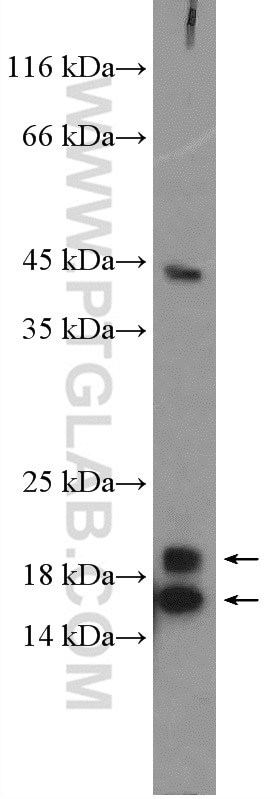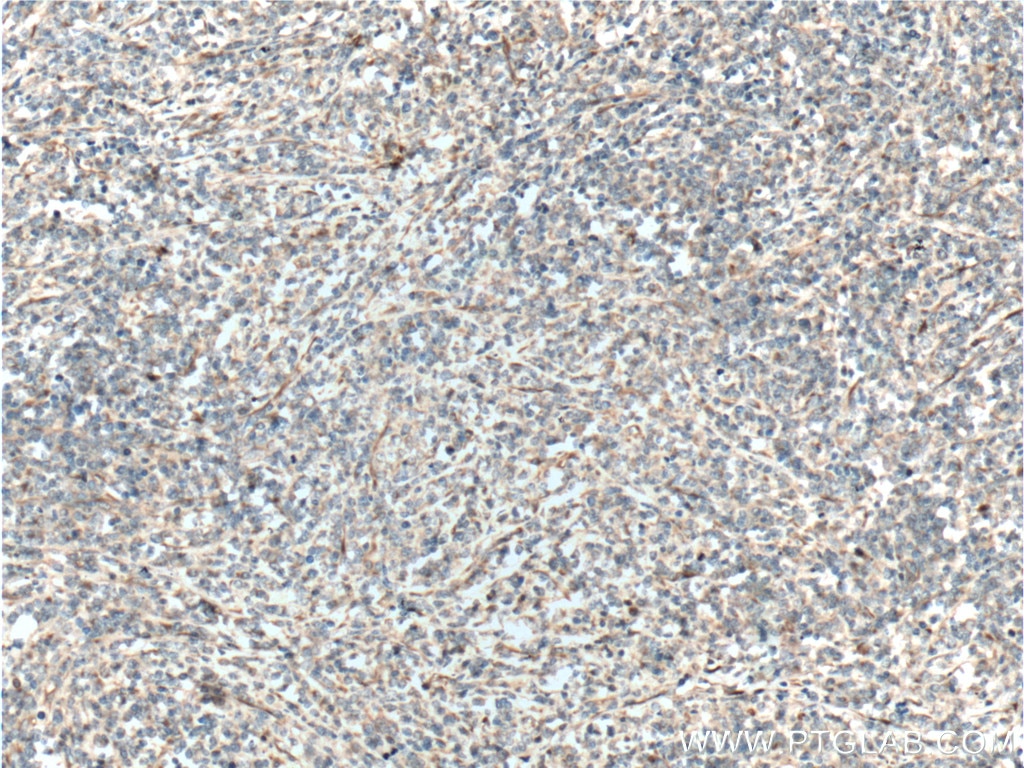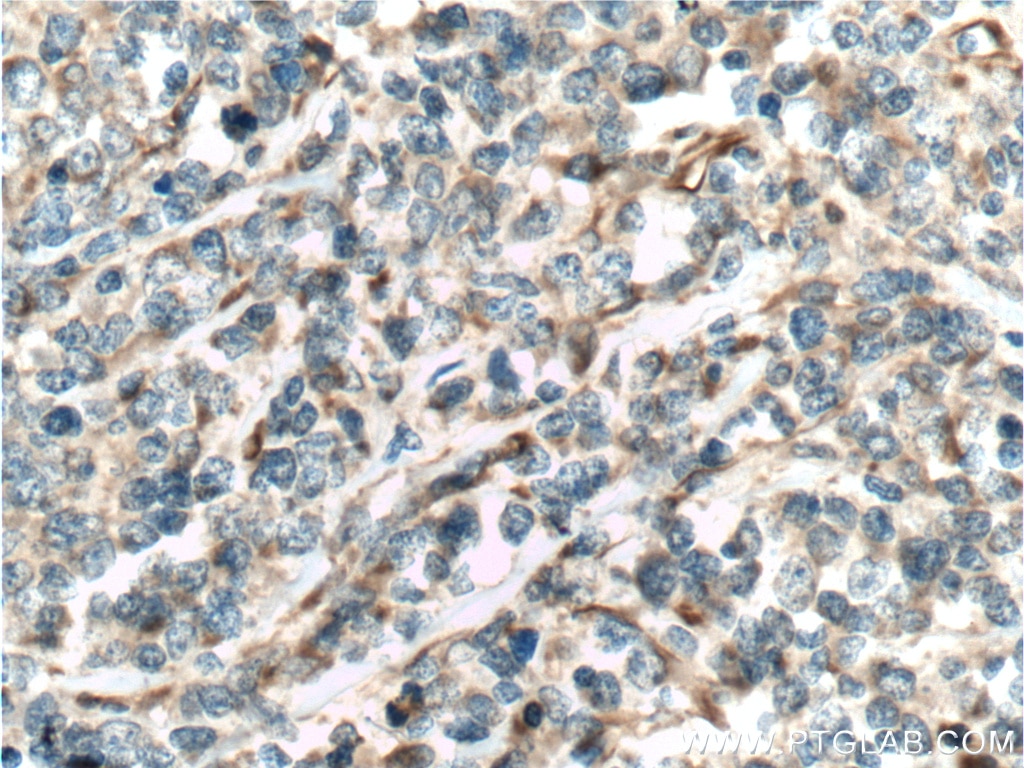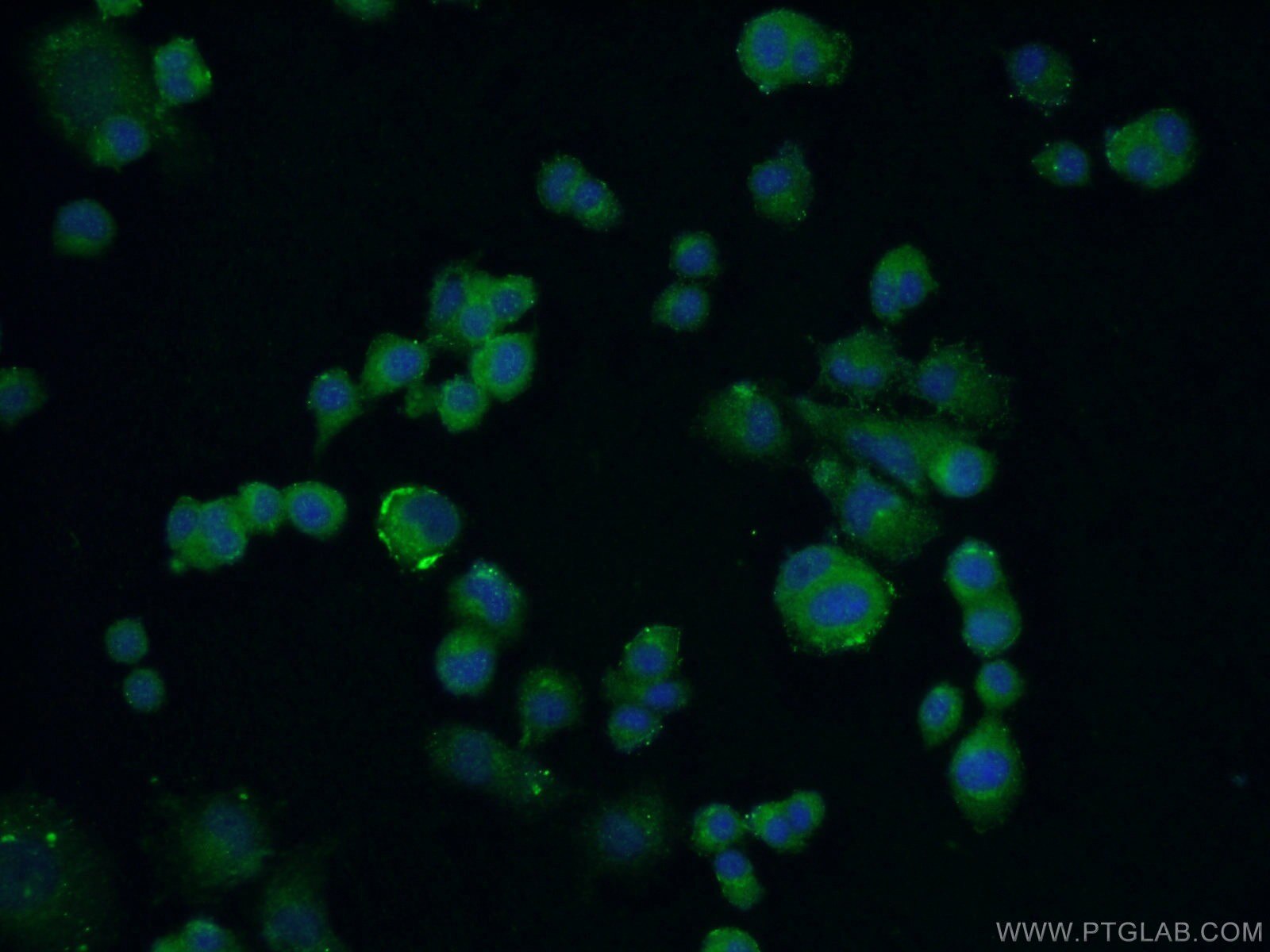C13orf1 Polyclonal antibody
C13orf1 Polyclonal Antibody for WB, IF, IHC, ELISA
Host / Isotype
Rabbit / IgG
Reactivity
human, mouse
Applications
WB, IF, IHC, ELISA
Conjugate
Unconjugated
Cat no : 26510-1-AP
Synonyms
Validation Data Gallery
Tested Applications
| Positive WB detected in | mouse brain tissue |
| Positive IHC detected in | human lymphoma tissue Note: suggested antigen retrieval with TE buffer pH 9.0; (*) Alternatively, antigen retrieval may be performed with citrate buffer pH 6.0 |
| Positive IF detected in | PC-12 cells |
Recommended dilution
| Application | Dilution |
|---|---|
| Western Blot (WB) | WB : 1:500-1:1000 |
| Immunohistochemistry (IHC) | IHC : 1:50-1:500 |
| Immunofluorescence (IF) | IF : 1:50-1:500 |
| It is recommended that this reagent should be titrated in each testing system to obtain optimal results. | |
| Sample-dependent, Check data in validation data gallery. | |
Product Information
The immunogen of 26510-1-AP is C13orf1 Fusion Protein expressed in E. coli.
| Tested Reactivity | human, mouse |
| Host / Isotype | Rabbit / IgG |
| Class | Polyclonal |
| Type | Antibody |
| Immunogen | C13orf1 fusion protein Ag23487 |
| Full Name | chromosome 13 open reading frame 1 |
| Observed Molecular Weight | 17 kDa, 20 kDa |
| GenBank Accession Number | BC022519 |
| Gene Symbol | C13orf1 |
| Gene ID (NCBI) | 57213 |
| RRID | AB_2880536 |
| Conjugate | Unconjugated |
| Form | Liquid |
| Purification Method | Antigen affinity purification |
| Storage Buffer | PBS with 0.02% sodium azide and 50% glycerol pH 7.3. |
| Storage Conditions | Store at -20°C. Stable for one year after shipment. Aliquoting is unnecessary for -20oC storage. 20ul sizes contain 0.1% BSA. |
Background Information
C13orf1, also named as SPRYD7 and CLLD6, is involved in hematopoiesis via NOTCH signaling. C13orf1 plays an important role in the pathogenesis of B-CLL. There're some isoforms of C13orf1 with MW 15-17 kDa and 19-22 kDa.
Protocols
| Product Specific Protocols | |
|---|---|
| WB protocol for C13orf1 antibody 26510-1-AP | Download protocol |
| IHC protocol for C13orf1 antibody 26510-1-AP | Download protocol |
| IF protocol for C13orf1 antibody 26510-1-AP | Download protocol |
| Standard Protocols | |
|---|---|
| Click here to view our Standard Protocols |





